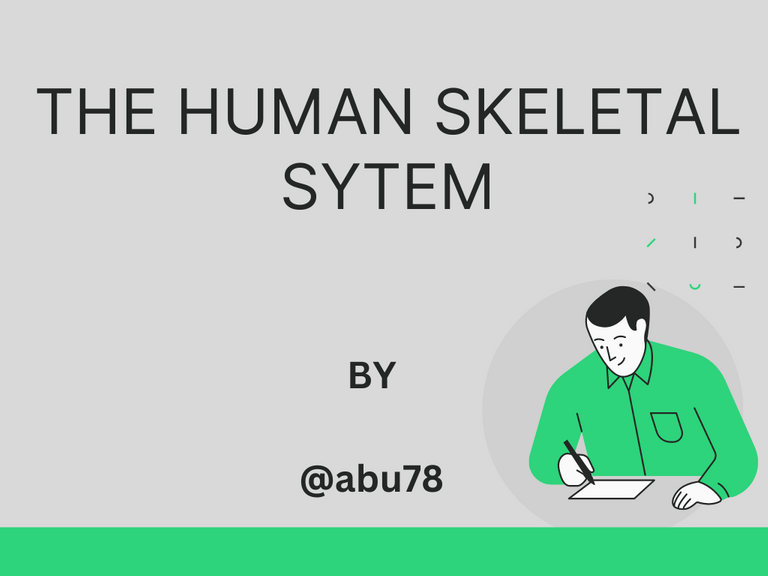The Human Skeletal System
Greetings to all and sundry on this platform once again. As a biochemistry student, today I researched "The Skeletal System" and decided to share it with you guys here. I hope that you will enjoy it and also learn from it. Stay tuned with me as I discuss this topic in my article.

The human skeletal system comprises joints, ligaments, cartilage, and bones which are complex in nature. The skeletal system is responsible for providing movement, support, and stability to the human body. It also serves as protection for other parts of the body including the organs like lungs, hearts, eyes, etc. It is very necessary for us to learn and know about the skeletal system and today I would briefly talk about that for the benefit of all. Okay, so let's look at the structure of this skeletal system.
The Structure of the Skeletal System
The structure of the human skeletal system is made up of 206 bones which include the long bones in the arms and legs, the skull, vertebrae, and also the rib cage.
Strong and fibrous connective tissues called ligaments are responsible for holding these 206 bones tightly in place. Ligaments also help in the movement that is contraction and relaxation of the bones by binding the bones together. Another structure called cartilage is also responsible for the absorbance of shock between joints. This structure is an elastic and softer tissue.
Types of the Human Skeletal System
It is divided into two major types called axial and appendicular. The first one is the axial skeleton is made up of the skull, rib cage, vertebrae, and sternum. These bones collectively form the central axis of the human body. It is responsible for providing protection for the brain, lungs, and heart. On the other hand, the appendicular skeleton is composed of the limbs and shoulder girdle bones. These bones allow us to move and also to grasp objects from different places.
Functions and Importance of the Human Skeletal System
There are several functions and benefits of this system and they include the following;
It is responsible for the provision of protection for some vital organs. The spinal cord which is one of the vital organs is protected by the bones of the spine. Similarly, the rib cage and the skull protect the heart and bain.
The human skeletal system also provides a supportive and stabilizing structure for the human body. There would be no movement of the human body if the skeleton wasn't existing in them.
It helps in the contraction and relaxation of the bones and joints which leads to easy movement of the human body. Our lips are able to move in all directions due to the muscles attached to the tendons. Balance maintenance is also created by the human skeletal system.
The production of blood cells is another function of the human skeletal system. This can be gotten from the bone marrow which is found inside a bone. These cells that are produced by the skeletal system help in the transport of oxygen and other nutrients all over the body.
Without the skeletal system, life would have been something else because we would just be seated in one place without any movement, or support of our body.
When it comes to the growth and development of the human body, the skeletal system also plays a vital role in there. It also serves as the provision of the basic structure of the human body by giving height and shape to the body.
The references given below are sites where you can learn more about the human skeletal system.
Reference 1
Reference 2
Reference 3
Reference 4

Why do you use #leofinance tag on this post?
Please read this:
https://leopedia.io/faq/#what-kind-of-content-can-i-post-on-leofinance
Posted Using LeoFinance Beta
noted with thanks
The function of the human skeletal system is a lot, it helps with the control of the standing, sitting and everything in between.
Yeah, one of the most vital system of the human body.